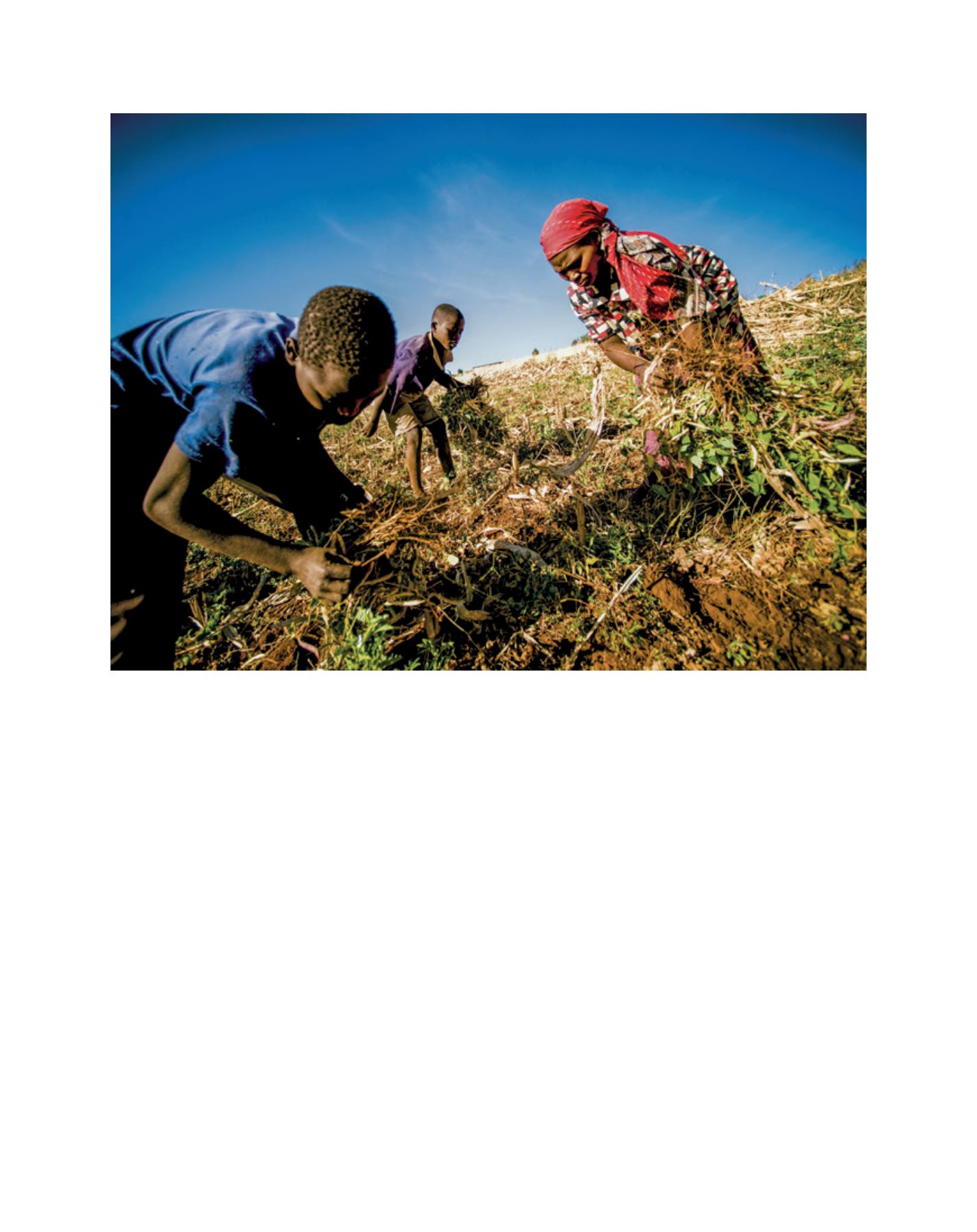

[
] 40
Image: WFP/Vanessa Vick
In Uganda, food purchased from P4P-supported smallholder farmers’ organizations are used in WFP’s emergency food distribution and
food and nutrition security programmes
loan qualifying criteria, enabling cooperative unions in
Ethiopia to access credit where they were often unable to
previously. FDCs have also been used in other P4P pilot
countries, allowing farmers’ organizations to access credit
at favourable interest rates.
Agriculture, nutrition and gender
Women face many challenges that can preclude them from
independently owning or managing land and productive
assets. In many households, men control the production and
marketing of crops as well as household finances. The P4P
pilot specifically targeted women farmers in order to address
the particular difficulties they face, with an ambitious goal to
have 50 per cent women participants. While P4P succeeded
in tripling women’s participation in P4P-supported farmers’
organizations during the pilot period, the experience demon-
strated that mere numerical participation does not directly
translate into a positive impact on the lives of women
farmers, nor provide them with the same financial gains as
their male counterparts.
Rather, P4P found that a variety of interventions were
necessary to empower women farmers, including context-
specific action plans, new methods for targeting women
farmers, including men in gender sensitization efforts and
providing women with time- and labour-saving technol-
ogy. In many cases, these efforts have assisted women to
gain increased voice and greater decision-making ability in
their homes and communities. Though these efforts yielded
results, in countries such as Ethiopia, cultural barriers and
traditional land tenure make it difficult for women to profit
from their work. Ensuring that women benefit economically
from P4P has been especially challenging in cases in which
women are not heads of households.
Through P4P and partners’ efforts, agricultural develop-
ment and nutrition have been linked, facilitating sustainable
improvements within rural households and communities.
Nutrition-sensitive approaches include improving small-
holders’ agricultural production, empowering women,
supporting resilience and providing access to nutrition
education. In countries such as Afghanistan and Guatemala,
P4P-supported smallholders market their crops to processors
and millers for the creation of fortified flour and nutritious
foods such as high-energy biscuits. Government investment
has been vital to these efforts, as has the involvement of the
private sector, which has committed to making purchases to
best benefit smallholder farmers.
D
eep
R
oots
















